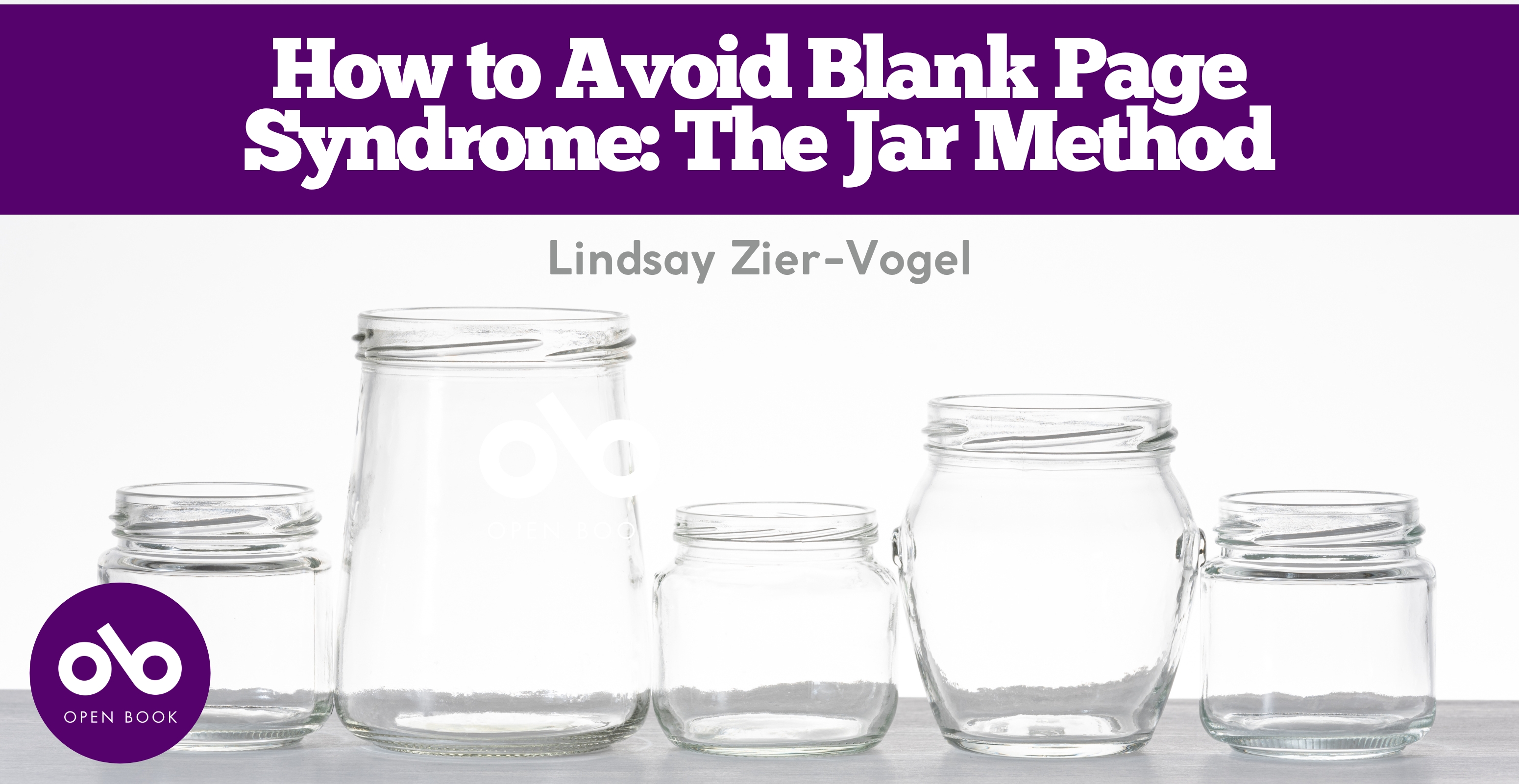How to Avoid Blank Page Syndrome: The Jar Method
By Lindsay Zier-Vogel
When I’m editing, there are specific problems to tackle, and I find I have a clear to-do list. Even if there’s a lot to do, I have a road map, but at the beginning of a project, I get so easily daunted by the blank page. I have all these ideas, and can see where the work wants to go, but I have no entry point into the world. It feels like I’m standing at the bottom of a mountain and I have no idea how to start climbing.
A few years ago, when I was starting my forthcoming novel, The Fun Times Brigade, I knew I wanted to write a novel about grief, and friendship, and a touring kids’ musician, and the bewildering early days of new motherhood. But I wasn’t sure how I was going to tackle all of that. I also had two very young children, and the only time I could write was during twenty-minute windows in the early mornings before my kids woke up and my writing brain was co-opted with requests for toast, no cereal, no waffles.
Cue, the Jar Method (patent pending!). I wrote ideas—both big picture, and scene ideas—onto small slips of paper and put them in a Mason jar.
Some were specific—going on tour bus for the first time, argument with husband, festival performance, recording studio scene, coming up with a band name, breastfeeding, pi Day, singing Baby Beluga. Some were less specific—birth, cancer, pregnancy.
And every morning I would wake up in the dark, set my timer for twenty minutes, and pull a prompt out of the jar.
I couldn’t overthink a scene, or hmm and haw over what to write about, or wonder if what I was writing was good or not. I had to get out of my own way and write. Besides, the timer was ticking. Though I generally hate being told what to do, I love having a task, and felt accomplished every time my timer would go off.
Sometimes I wouldn’t be done at the twenty-minute mark, and when I could, I’d continue. Sometimes I would be done long before the timer went off. I made a rule for myself to keep writing, to push through the “I’m done” feeling eight minutes in, and even though not everything made the cut, investing in an idea or a scene for twenty minute is a good exercise for me in not just accepting the very first things that appears on the page.
An almost-novel
Eventually, I ran out of slips of paper in the jar, and had a folder full of documents. I grouped them into chronological sub-folders, and found a starting point. From there, I began to layer and stack up the scenes one after another, letting the narrative emerge from these already-written documents.
It wasn’t a full novel, but after a few months of “jar writing”, and another months of finding an order for the documents, I had the broad strokes of the book (a book I can actually hold in my hands now!)
Your CanLit News
Subscribe to Open Book’s newsletter to get local book events, literary content, writing tips, and more in your inbox
The Jar Method: For editing and re-writing too
I’m in the middle of a big rewrite of a new project, and was feeling particularly daunted after getting notes on the work. I knew what needed to change, but I had the same standing-at-the-bottom-of-a-mountain feeling I had when I started The Fun Times Brigade. I had no idea how I was going to get back inside the book, until I remembered the Jar Method!
I wrote a list of all of the missing holes and underdeveloped scenes and characters, and put each one on a slip of paper, and filled my trusty Mason jar.
The jar is almost empty now, and my next steps are sifting through all of the documents. I love knowing that I have (most of) the missing bricks written, and waiting for me in a folder called “Jar”.
The views expressed by Open Book columnists are those held by the authors and do not necessarily reflect the views of Open Book.
Lindsay Zier-Vogel is an author, arts educator, grant writer, and the creator of the internationally acclaimed Love Lettering Project. After studying contemporary dance, she received her MA in Creative Writing from the University of Toronto. She is the author of the acclaimed debut novel Letters to Amelia and her work has been published widely in Canada and the UK. Dear Street is Lindsay’s first picture book, and is a 2023 Junior Library Guild pick, a 2023 Canadian Children’s Book Centre book of the year, and has been nominated for a Forest of Reading Blue Spruce Award. Since 2001, she has been teaching creative writing workshops in schools and communities, and as the creator of the Love Lettering Project, Lindsay has asked people all over the world to write love letters to their communities and hide them for strangers to find, spreading place-based love.



